Ultra High Frequency (UHF)
From Signal Identification Wiki
Click the name of a signal to see more detailed information, possible decoding, and additional sound and waterfall samples
UHFUltra High Frequency (300-3000 MHz) encompasses frequencies from 300 MHzMegaHertz (MHz) 10^6 Hz to 3 GHzGigaHertz (GHz) 10^9 Hz
| Inactive (No longer in use) |
Active (Currently in active use) |
Status Unknown or Intermittent |
| Signal Name | Description | Frequency | Mode | Modulation | Bandwidth | Location | Sample Audio | Waterfall image |
|---|---|---|---|---|---|---|---|---|
| 1G Advanced Mobile Phone System (AMPS) | The first generation of cellular mobile telecommunications, which used analogue NFMNarrowband Frequency Modulation voice. | 824 MHzMegaHertz (MHz) 10^6 Hz — 894 MHzMegaHertz (MHz) 10^6 Hz | NFMNarrowband Frequency Modulation | FMFrequency Modulation, FSKFrequency-Shift Keying | 10 kHzKiloHertz (kHz) 10^3 Hz — 30 kHzKiloHertz (kHz) 10^3 Hz | Worldwide |  |
|
| 2006 Kia Grand Carnival Keyfob | Original remote of KIA Carnival (2006). | 433.92 MHzMegaHertz (MHz) 10^6 Hz | NFMNarrowband Frequency Modulation | FSKFrequency-Shift Keying | 100 kHzKiloHertz (kHz) 10^3 Hz | Worldwide |  |
|
| 2G CDMA (IS-95) | CDMACode Division Multiple Access-One also known as IS-95, was the first ever cellular standard technology based on Code Division Multiple Access (CDMACode Division Multiple Access). It is a predecessor of the 1xRTT (CDMA2000/IS-2000) standard, which is backwards compatible. | 815 MHzMegaHertz (MHz) 10^6 Hz — 1,995 MHzMegaHertz (MHz) 10^6 Hz | RAW | DSSS/QPSKQuadrature Phase-Shift Keying (2 bits per symbol) | 1.228 MHzMegaHertz (MHz) 10^6 Hz | Worldwide |  |
|
| 3G WCDMA | WCDMA, known primarily as 3G mobile, is a family of 3G data protocols used to send voice, text and signaling data to smart phones and other wireless devices. | 824 MHzMegaHertz (MHz) 10^6 Hz — 2,100 MHzMegaHertz (MHz) 10^6 Hz | RAW, AMAmplitude Modulation | QAMQuadrature Amplitude Modulation, QPSKQuadrature Phase-Shift Keying (2 bits per symbol), CDMACode Division Multiple Access | 4.2 MHzMegaHertz (MHz) 10^6 Hz | 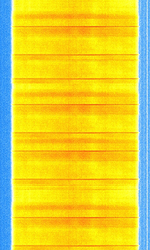 |
||
| 4G LTE Network | Long Term Evolution Network. Also known as 4G LTE Data and Evolved Universal Terrestrial Radio Access (E-UTRA). Data service for wireless consumer devices. | 450 MHzMegaHertz (MHz) 10^6 Hz — 3,500 MHzMegaHertz (MHz) 10^6 Hz | RAW | OFDMOrthogonal Frequency-Division Multiplexing, PSKPhase-Shift Keying, QAMQuadrature Amplitude Modulation | 1.4 MHzMegaHertz (MHz) 10^6 Hz — 20 MHzMegaHertz (MHz) 10^6 Hz | Worldwide |  |
|
| 5G 'New Radio' Cellular Radio - Downlink | 5G cellular, also known by 3GPP '5G' NR (new radio), etc. is a newly released cellular standard that allows for backwards compatibility with 4G LTE, and will allow for several gigabits of connection speeds, (up to 10-100Gb) per second. This is the 600 MHzMegaHertz (MHz) 10^6 Hz downlink band for the new standard. | 600 MHzMegaHertz (MHz) 10^6 Hz — 50,000 MHzMegaHertz (MHz) 10^6 Hz | AMAmplitude Modulation | UFMC, GFDM, OFDMOrthogonal Frequency-Division Multiplexing, FBMC | 5 MHzMegaHertz (MHz) 10^6 Hz — 400 MHzMegaHertz (MHz) 10^6 Hz | Worldwide |  |
|
| 77Ya6 'Voronezh' radar | Voronezh (Воронеж) is a Russian radar family capable of aircraft and ballistic missile monitoring. | 150 MHzMegaHertz (MHz) 10^6 Hz — 440 MHzMegaHertz (MHz) 10^6 Hz | AMAmplitude Modulation | FMCW | 2 MHzMegaHertz (MHz) 10^6 Hz | Russia |  |
|
| 802.11ah | HaLow (802.11ah) is a wireless technology standard for exchanging data between devices over medium distances. Released by the Wi-Fi Alliance in 2016, it was initially developed as a competitive Internet of Things standard. | 750 MHzMegaHertz (MHz) 10^6 Hz — 928 MHzMegaHertz (MHz) 10^6 Hz | ODFM, BPSKBinary Phase-Shift Keying (1 bit per symbol), QPSKQuadrature Phase-Shift Keying (2 bits per symbol), QAMQuadrature Amplitude Modulation | 1 MHzMegaHertz (MHz) 10^6 Hz | Worldwide | — |  |
|
| 802.11ax | IEEE 802.11ax-2021, also known as Wi-Fi 6, is a WLAN standard improves upon previous Wi-Fi standards by utilizing 1024QAM modulation, larger channel bandwidths, and improved efficiency. | 2,412 MHzMegaHertz (MHz) 10^6 Hz — 7,125 MHzMegaHertz (MHz) 10^6 Hz | AMAmplitude Modulation | OFDMA, BPSKBinary Phase-Shift Keying (1 bit per symbol), QPSKQuadrature Phase-Shift Keying (2 bits per symbol), 16QAM, 64QAM, 256QAM, 1024QAM | 20 MHzMegaHertz (MHz) 10^6 Hz — 160 MHzMegaHertz (MHz) 10^6 Hz | Worldwide |  |
|
| 802.11n | IEEE 802.11n-2009, commonly shortened to 802.11n, is a wireless-networking standard that uses multiple antennas to increase data rates. The Wi-Fi Alliance has also retroactively labeled the technology for the standard as Wi-Fi 4. | 2,412 MHzMegaHertz (MHz) 10^6 Hz — 5,865 MHzMegaHertz (MHz) 10^6 Hz | DSBDual Side Band Modulation, RAW | BPSKBinary Phase-Shift Keying (1 bit per symbol), QPSKQuadrature Phase-Shift Keying (2 bits per symbol), 16QAM, 64QAM, 256QAM (Turbo QAMQuadrature Amplitude Modulation) | 20 MHzMegaHertz (MHz) 10^6 Hz — 40 MHzMegaHertz (MHz) 10^6 Hz | Worldwide |  |
|
| AFSK Paging Link | A variant of POCSAG/FLEX with audio FSKFrequency-Shift Keying modulation based off of the bell 202 tones. Typically found as uplinks/downlinks to pager network transmitters. | 72 MHzMegaHertz (MHz) 10^6 Hz — 928 MHzMegaHertz (MHz) 10^6 Hz | NFMNarrowband Frequency Modulation | AFSKAudio Frequency-Shift Keying | 9 kHzKiloHertz (kHz) 10^3 Hz | Worldwide |  |
|
| AIST 2D | Aist 2D is a Russian microsatellite developed and designed by a group of Samara Aerospace University students, postgraduates, and scientists in cooperation with TsSKB-Progress. | 435.315 MHzMegaHertz (MHz) 10^6 Hz | NFMNarrowband Frequency Modulation | PM/PCM | 10 kHzKiloHertz (kHz) 10^3 Hz | Worldwide |  |
|
| AMSAT-P3D | AMSAT-P3D (Known as Phase 3D, OSCAR-40, and AO-40) is a amateur radio satellite built by AMSAT. As of 2004, the satellite's systems have failed. | 145.805 MHzMegaHertz (MHz) 10^6 Hz — 24,048.285 MHzMegaHertz (MHz) 10^6 Hz | USBUpper Side Band Modulation (Radio, referring to reception and modulation mode)Universal Serial Bus (Computer, referring to USB Ports and cables) | PSKPhase-Shift Keying | 1.6 kHzKiloHertz (kHz) 10^3 Hz | Worldwide |  |
|
| ARGOS A-DCS | Some polar weather satellites from the METOP and POES series carry ARGOS A-DCS (Advanced Data Collection System), which is a system to collect data from sondes and other remote land or air-based instrumentation. | 465.99 MHzMegaHertz (MHz) 10^6 Hz | USBUpper Side Band Modulation (Radio, referring to reception and modulation mode)Universal Serial Bus (Computer, referring to USB Ports and cables) | PSKPhase-Shift Keying | 54 kHzKiloHertz (kHz) 10^3 Hz | Worldwide |  |
|
| ATSC Broadcast | Advanced Television Systems Committee Television. 8VSB Modulation | 54 MHzMegaHertz (MHz) 10^6 Hz — 700 MHzMegaHertz (MHz) 10^6 Hz | RAW | 8VSB | 6 MHzMegaHertz (MHz) 10^6 Hz | United States | — |  |
| Acer X222W monitor, sleep pulse | Used for some PC monitors to keep the monitor's power on (or sleeping) across the spectra. Monitors may transmit whatever frequency peaks needed to keep it "on" or on sleep mode. | 420 MHzMegaHertz (MHz) 10^6 Hz — 470 MHzMegaHertz (MHz) 10^6 Hz | FMFrequency Modulation, AMAmplitude Modulation | Pulse | 300 kHzKiloHertz (kHz) 10^3 Hz | Worldwide | 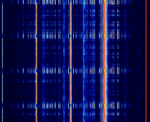 |
|
| Alps Electric Co. TWB1U840 Key Fob | Alps Electric Co. TWB1U840 Key Fob for Nissan Sentra, Nissan Versa, and Nissan Leaf model years 2013-2017+. | 314.975 MHzMegaHertz (MHz) 10^6 Hz | WFMWideband Frequency Modulation | FSKFrequency-Shift Keying | 100 kHzKiloHertz (kHz) 10^3 Hz | Worldwide |  |
|
| Altai Radiotelephone | The initial generation of cellular mobile radiotelecommunications, similar to trunked radio. -- (Audio Sample is *loud*) -- | 300 MHzMegaHertz (MHz) 10^6 Hz — 342 MHzMegaHertz (MHz) 10^6 Hz | NFMNarrowband Frequency Modulation | FMFrequency Modulation, FSKFrequency-Shift Keying | 10 kHzKiloHertz (kHz) 10^3 Hz | Worldwide |  |
|
| Amplitude Modulation (AM) | Long range commercial broadcast and international radio. Also used for aviation communications. | 153 kHzKiloHertz (kHz) 10^3 Hz — 137 MHzMegaHertz (MHz) 10^6 Hz | AMAmplitude Modulation | AMAmplitude Modulation | 10 kHzKiloHertz (kHz) 10^3 Hz | Worldwide |  |
|
| Aprizesat | Data downlink from Aprizesat microsatellites. Aprizesat constellation consists of 12 Active satellites, These provide a worldwide M2M asset tracking service and relay AIS packets. | 400.5 MHzMegaHertz (MHz) 10^6 Hz — 400.65 MHzMegaHertz (MHz) 10^6 Hz | USBUpper Side Band Modulation (Radio, referring to reception and modulation mode)Universal Serial Bus (Computer, referring to USB Ports and cables) | GMSKGaussian Minimum-Shift Keying | 5 kHzKiloHertz (kHz) 10^3 Hz | Worldwide |  |
|
| Automatic Dependent Surveillance-Broadcast (ADS-B) | ADS-B is used by aircraft as an alternative to secondary radar. It broadcasts GPS position (latitude, longitude), pressure altitude, callsign, as well as track and ground speed. | 978 MHzMegaHertz (MHz) 10^6 Hz — 1,090 MHzMegaHertz (MHz) 10^6 Hz | RAW | PPMPulse Position Modulation | 2 MHzMegaHertz (MHz) 10^6 Hz | Worldwide |  |
|
| Automatic Transmitter Identification System (ATIS) | ATIS systems are identification tags used by inland commercial waterway traffic on rivers in Europe. The FSKFrequency-Shift Keying burst is appended at the end of every voice transmission by the vessel operator. | 30 MHzMegaHertz (MHz) 10^6 Hz — 800 MHzMegaHertz (MHz) 10^6 Hz | NFMNarrowband Frequency Modulation | FSKFrequency-Shift Keying | 12 kHzKiloHertz (kHz) 10^3 Hz | Europe |  |
|
| Automatic Vehicle Monitoring (AVM) | Proprietary FFSKFast Frequency-Shift Keying data network used for public transport telemetry. It is primarily used to track and control vehicles, and facilitates PTTPush To TalkPress to TransmitMinistries of Postal, Telephone, and Telegraph Service (Soviet Agency)-ID for communication with tram drivers. | 507.225 MHzMegaHertz (MHz) 10^6 Hz — 517.875 MHzMegaHertz (MHz) 10^6 Hz | NFMNarrowband Frequency Modulation | FFSKFast Frequency-Shift Keying | 7.5 kHzKiloHertz (kHz) 10^3 Hz | Australia |  |
|
| BALDR Weather Sensor Telemetry | BalDR weather sensor SCADA telemetry, A signal standard that belongs to the BalDR brand of weather sensors, and might also belong to other brands of weather sensors that use their technologies. Uses a set of randomly-generated delimiters which vary the overall pitch of the signal by slight HzHertz (Hz), unit of frequency, defined as one cycle per second (1 Hz). rates and modulation properties, to send its data and keep the display updated. | 434.675 MHzMegaHertz (MHz) 10^6 Hz | FMFrequency Modulation | FMFrequency Modulation-P | 12.5 kHzKiloHertz (kHz) 10^3 Hz | Worldwide |  |
|
| Baofeng GMSK | Proprietary GMSKGaussian Minimum-Shift Keying mode used for voice by Fujian Baofeng walkie talkies | 400 MHzMegaHertz (MHz) 10^6 Hz — 480 MHzMegaHertz (MHz) 10^6 Hz | NFMNarrowband Frequency Modulation | GMSKGaussian Minimum-Shift Keying | 12.5 kHzKiloHertz (kHz) 10^3 Hz | Worldwide |  |
|
| Binary Interchange of Information and Signaling (BIIS) | BIIS (also known as BIIS 1200) is an ETSIEuropean Telecommunications Standards Institute. An independent, not-for-profit, standardization organization in the telecommunications industry in Europe, developing global telecommunications standards. protocol for a digital selective calling method with the added benefit of extended capability of transmitting data that exceeds what could be done with old 5-tone analog calling methods like CCIRComité Consultatif International pour la Radio (Predecessor of the ITU-R) and ZVEI. | 35 MHzMegaHertz (MHz) 10^6 Hz — 800 MHzMegaHertz (MHz) 10^6 Hz | NFMNarrowband Frequency Modulation | FFSKFast Frequency-Shift Keying | 6 kHzKiloHertz (kHz) 10^3 Hz | Europe |  |
|
| Bluetooth | Bluetooth is a wireless technology standard for exchanging data over short distances from fixed and mobile devices and building personal area networks (PANs). Invented by telecom vendor Ericsson in 1994, it was initially conceived as a wireless alternative to RS-232 data cables. It can connect several devices, overcoming synchronization problems. | 2,400 MHzMegaHertz (MHz) 10^6 Hz — 2,485 MHzMegaHertz (MHz) 10^6 Hz | GFSKGaussian Frequency-Shift Keying, DPSKDifferential Phase-Shift Keying | 1 MHzMegaHertz (MHz) 10^6 Hz | Worldwide |  |
||
| CCIR Selcall | CCIRComité Consultatif International pour la Radio (Predecessor of the ITU-R) selcall consists of CCIRComité Consultatif International pour la Radio (Predecessor of the ITU-R)-1, CCIRComité Consultatif International pour la Radio (Predecessor of the ITU-R)-2, and PCCIR, which are 5-tone selcall modes for VHFVery High Frequency (30-300 MHz)/UHFUltra High Frequency (300-3000 MHz) radios. CCIRComité Consultatif International pour la Radio (Predecessor of the ITU-R)-1 and CCIRComité Consultatif International pour la Radio (Predecessor of the ITU-R)-2 only differ in the tone duration, and PCCIR only differs in the group, reset, and repeat tone frequencies. | 30 MHzMegaHertz (MHz) 10^6 Hz — 800 MHzMegaHertz (MHz) 10^6 Hz | NFMNarrowband Frequency Modulation | MFSKMultiple Frequency Shift-Keying | 5 kHzKiloHertz (kHz) 10^3 Hz | Worldwide |  |
|
| CCITT | CCITT is a 5-tone selcall system for VHFVery High Frequency (30-300 MHz)/UHFUltra High Frequency (300-3000 MHz) radios. | 30 MHzMegaHertz (MHz) 10^6 Hz — 800 MHzMegaHertz (MHz) 10^6 Hz | NFMNarrowband Frequency Modulation | MFSKMultiple Frequency Shift-Keying | 5 kHzKiloHertz (kHz) 10^3 Hz | Worldwide |  |
|
| CDMA2000 (3G physical layer) | CDMA2000, or IS-2000, is a cellular network standard utilizing the CDMACode Division Multiple Access technology for calls and data. | 450 MHzMegaHertz (MHz) 10^6 Hz — 1,900 MHzMegaHertz (MHz) 10^6 Hz | RAW | QPSKQuadrature Phase-Shift Keying (2 bits per symbol) | 1.23 MHzMegaHertz (MHz) 10^6 Hz | United States |  |
|
| CDMA420 | 410 MHzMegaHertz (MHz) 10^6 Hz — 425 MHzMegaHertz (MHz) 10^6 Hz | AMAmplitude Modulation | QPSKQuadrature Phase-Shift Keying (2 bits per symbol) | 2.5 MHzMegaHertz (MHz) 10^6 Hz | Poland |  |
||
| Cobra Dane | The AN/FPS-108 COBRA DANE is a PESA phased array radar installation operated by Raytheon for the United States Space Force (originally for the United States Air Force) at Eareckson Air Station on the island of Shemya, Aleutian Islands, Alaska. | 1,215 MHzMegaHertz (MHz) 10^6 Hz — 1,400 MHzMegaHertz (MHz) 10^6 Hz | United States | — |  |
|||
| CompuLert | Low speed FSKFrequency-Shift Keying telemetry to monitor and control warning sirens that are used to warn the public of threats such as tsunamis, severe weather, chemical spills and civil emergencies. | 453.375 MHzMegaHertz (MHz) 10^6 Hz | NFMNarrowband Frequency Modulation | FSKFrequency-Shift Keying | 5 kHzKiloHertz (kHz) 10^3 Hz | Worldwide |  |
|
| Continuous Tone-Coded Squelch System (CTCSS) | CTCSS, also known as Private Line and Channel Guard, is a low continuous tone transmitted on NFMNarrowband Frequency Modulation voice transmissions that is used to squelch and manage transmissions on a given frequency. | 30 MHzMegaHertz (MHz) 10^6 Hz — 800 MHzMegaHertz (MHz) 10^6 Hz | NFMNarrowband Frequency Modulation | CWContinuous Wave | 5 kHzKiloHertz (kHz) 10^3 Hz — 30 kHzKiloHertz (kHz) 10^3 Hz | Worldwide |  |
|
| D-STAR | D-STAR is a digital voice protocol used by ham radio. Is sometimes routed over the internet for international communications. | 145.67 MHzMegaHertz (MHz) 10^6 Hz | NFMNarrowband Frequency Modulation | GMSKGaussian Minimum-Shift Keying | 6.25 kHzKiloHertz (kHz) 10^3 Hz | Worldwide |  |
|
| DFM-09 | GRAW DFM-09 radiosonde measures temperature, humidity, air pressure, wind direction, and wind speed. | 400.01 MHzMegaHertz (MHz) 10^6 Hz — 405.99 MHzMegaHertz (MHz) 10^6 Hz | FMFrequency Modulation | FSKFrequency-Shift Keying | Europe | — |  |
|
| Denso 4EA Key Fob | Denso Wireless Key Fob 4EA built by Denso Corporation for General Motors auto brands Chevrolet and Buick. Used on Chevrolet Camaro and Malibu from 2016+. Used on Buick Lacrosse 2017+. | 433.92 MHzMegaHertz (MHz) 10^6 Hz | AMAmplitude Modulation | AMAmplitude Modulation, ASKAmplitude-Shift Keying | 15 kHzKiloHertz (kHz) 10^3 Hz | Worldwide |  |
|
| Digital Audio Broadcasting (DAB) | DAB is an audio broadcasting standard containing a multiplex of digital radio stations in the signal. | 174 MHzMegaHertz (MHz) 10^6 Hz — 239 MHzMegaHertz (MHz) 10^6 Hz | AMAmplitude Modulation | OFDMOrthogonal Frequency-Division Multiplexing | 1.536 MHzMegaHertz (MHz) 10^6 Hz | Worldwide | ||
| Digital Audio Broadcasting Plus (DAB+) | DAB+ is a medium of delivering broadcast radio, containing multiple stations in a single multiplex. | 174 MHzMegaHertz (MHz) 10^6 Hz — 230 MHzMegaHertz (MHz) 10^6 Hz | OFDMOrthogonal Frequency-Division Multiplexing | 1.536 MHzMegaHertz (MHz) 10^6 Hz | Worldwide | |||
| Digital Dispatch Systems MDT | Digital Dispatch Systems Mobile Data Terminal is a dispatching system used by taxi and private transportation companies. | 152 MHzMegaHertz (MHz) 10^6 Hz — 854.788 MHzMegaHertz (MHz) 10^6 Hz | NFMNarrowband Frequency Modulation | PSKPhase-Shift Keying | 8 kHzKiloHertz (kHz) 10^3 Hz | United States |  |
|
| Digital Enhanced Cordless Telecommunications (DECT) | DECT is a ETSIEuropean Telecommunications Standards Institute. An independent, not-for-profit, standardization organization in the telecommunications industry in Europe, developing global telecommunications standards. standard for short range communications, mainly cordless phones. It uses a 10 channel/24 slots in a TDMATime Division Multiple Access FDD structure. Audio sample is 100 times slower than real for listening purposes. | 1,880 MHzMegaHertz (MHz) 10^6 Hz — 1,900 MHzMegaHertz (MHz) 10^6 Hz | USBUpper Side Band Modulation (Radio, referring to reception and modulation mode)Universal Serial Bus (Computer, referring to USB Ports and cables) | GFSKGaussian Frequency-Shift Keying | 1.6 MHzMegaHertz (MHz) 10^6 Hz | Worldwide |  |
|
| Digital Mobile Radio (DMR) | Digital Mobile Radio (DMR) is an open digital mobile radio standard defined by ETSIEuropean Telecommunications Standards Institute. An independent, not-for-profit, standardization organization in the telecommunications industry in Europe, developing global telecommunications standards. and used in commercial products around the world. Mostly used by private network and local police, can be encrypted. Used in MOTOTRBO products. | 66 MHzMegaHertz (MHz) 10^6 Hz — 860 MHzMegaHertz (MHz) 10^6 Hz | NFMNarrowband Frequency Modulation | 4FSK4-Level Frequency Shift Keying | 12.5 kHzKiloHertz (kHz) 10^3 Hz | Worldwide |  |
|
| Digital NBTV | Method for transmitting digital images via radio, similar to WinDRM or KG-STV | 3 MHzMegaHertz (MHz) 10^6 Hz — 470 MHzMegaHertz (MHz) 10^6 Hz | SSBSingle-sideband modulation, FMFrequency Modulation | BPSKBinary Phase-Shift Keying (1 bit per symbol) | 2.5 kHzKiloHertz (kHz) 10^3 Hz | Worldwide |  |
|
| Digital Private Mobile Radio (dPMR) | dPMR is an open, non-proprietary trunked radio standard developed by ETSIEuropean Telecommunications Standards Institute. An independent, not-for-profit, standardization organization in the telecommunications industry in Europe, developing global telecommunications standards., published under ETSIEuropean Telecommunications Standards Institute. An independent, not-for-profit, standardization organization in the telecommunications industry in Europe, developing global telecommunications standards. TS 102 658. Supports both data and digital voice transmission. | 149.019 MHzMegaHertz (MHz) 10^6 Hz — 446.2 MHzMegaHertz (MHz) 10^6 Hz | NFMNarrowband Frequency Modulation | 4FSK4-Level Frequency Shift Keying | 6.25 kHzKiloHertz (kHz) 10^3 Hz | Worldwide |  |
|
| Digital Video Broadcasting — Terrestrial (DVB-T) | Digital Video Broadcasting — Terrestrial (DVB-T) is a digital broadcast television format used in Europe and in many other countries in the world. | 174 MHzMegaHertz (MHz) 10^6 Hz — 786 MHzMegaHertz (MHz) 10^6 Hz | USBUpper Side Band Modulation (Radio, referring to reception and modulation mode)Universal Serial Bus (Computer, referring to USB Ports and cables) | QAMQuadrature Amplitude Modulation, OFDMOrthogonal Frequency-Division Multiplexing, QPSKQuadrature Phase-Shift Keying (2 bits per symbol) | 6 MHzMegaHertz (MHz) 10^6 Hz — 8 MHzMegaHertz (MHz) 10^6 Hz | Worldwide |  |
|
| Digital-Coded Squelch (DCS) | Digital in-band signalling used to squelch and manage transmissions on a given frequency. | 433 MHzMegaHertz (MHz) 10^6 Hz — 446 MHzMegaHertz (MHz) 10^6 Hz | NFMNarrowband Frequency Modulation | FSKFrequency-Shift Keying | Worldwide | 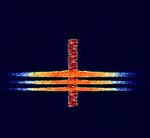 |
||
| DisplayPort Interference | DisplayPort is a digital standard used to carry video and audio data to computer monitors. It emits RFRadio Frequency interference in the 300-400 MHzMegaHertz (MHz) 10^6 Hz range when in use. | 159.558 MHzMegaHertz (MHz) 10^6 Hz — 381.5 MHzMegaHertz (MHz) 10^6 Hz | RAW | 250 kHzKiloHertz (kHz) 10^3 Hz | Worldwide |  |
||
| Distress Radiobeacon (Digital) | Digital Distress Radiobeacons (EPIRB's, PLB's and ELT's) are emergency radio beacons used for search and rescue operations to locate a vessel, plane, or person in distress. | 406 MHzMegaHertz (MHz) 10^6 Hz | NFMNarrowband Frequency Modulation | PSKPhase-Shift Keying | 1.4 kHzKiloHertz (kHz) 10^3 Hz | Worldwide | 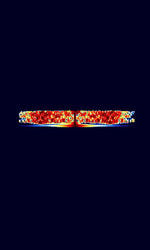 |
|
| Distributed Power Unit (DPU) | Distributed power refers to the placing of an extra locomotive at an intermediate point in the middle section of a train. This locomotive unit is remotely controlled from the lead locomotive, and greatly increases both the pulling and stopping power of longer trains. | 457.925 MHzMegaHertz (MHz) 10^6 Hz | NFMNarrowband Frequency Modulation | 6 kHzKiloHertz (kHz) 10^3 Hz | Worldwide |  |
||
| Dual Tone Multi Frequency (DTMF) | DTMF is a signaling mode used for a variety of purposes. It's most known for telephony dialing, but is in use for many different applications such as DTMF paging for DTMF-enabled VHFVery High Frequency (30-300 MHz)/UHFUltra High Frequency (300-3000 MHz) radios. | 30 MHzMegaHertz (MHz) 10^6 Hz — 800 MHzMegaHertz (MHz) 10^6 Hz | NFMNarrowband Frequency Modulation | MFSKMultiple Frequency Shift-Keying | 3.3 kHzKiloHertz (kHz) 10^3 Hz | Worldwide |  |
|
| ECG Telemetry | ECG Telemetry from a pacemaker. | 403.959 MHzMegaHertz (MHz) 10^6 Hz | FMFrequency Modulation | FSKFrequency-Shift Keying | 1 kHzKiloHertz (kHz) 10^3 Hz | Australia |  |
|
| EEA | EEA is a 5-tone selcall mode defined by the Electronic Engineering Association in the United Kingdom. | 30 MHzMegaHertz (MHz) 10^6 Hz — 800 MHzMegaHertz (MHz) 10^6 Hz | NFMNarrowband Frequency Modulation | MFSKMultiple Frequency Shift-Keying | 5 kHzKiloHertz (kHz) 10^3 Hz | Worldwide |  |
|
| EIA | EIA is a 5/6-tone selcall mode defined by the Electronics Industries Association in the United States. Also known as Motorola MetroPage. | 30 MHzMegaHertz (MHz) 10^6 Hz — 800 MHzMegaHertz (MHz) 10^6 Hz | NFMNarrowband Frequency Modulation | MFSKMultiple Frequency Shift-Keying | 5 kHzKiloHertz (kHz) 10^3 Hz | Worldwide |  |
|
| EURO | EURO is a 6/7-tone selcall mode used in VHFVery High Frequency (30-300 MHz)/UHFUltra High Frequency (300-3000 MHz) radios. Also known as EuroSignal. | 30 MHzMegaHertz (MHz) 10^6 Hz — 800 MHzMegaHertz (MHz) 10^6 Hz | NFMNarrowband Frequency Modulation | MFSKMultiple Frequency Shift-Keying | 5 kHzKiloHertz (kHz) 10^3 Hz | Worldwide |  |
|
| Electric Fence Remote Control | This signal comes from an RFRadio Frequency remote control device that transmits in UHFUltra High Frequency (300-3000 MHz) over 433.92MHz and controls the arming and disarming system of an electric fence. | 433.92 MHzMegaHertz (MHz) 10^6 Hz | AMAmplitude Modulation | AMAmplitude Modulation | 10 kHzKiloHertz (kHz) 10^3 Hz | Worldwide |  |
|
| End of Train Device (EOTD) | Transmits train telemetry such as brake status and accidental separation information to the head locomotive. | 452 HzHertz (Hz), unit of frequency, defined as one cycle per second (1 Hz). — 457.938 MHzMegaHertz (MHz) 10^6 Hz | NFMNarrowband Frequency Modulation | FSKFrequency-Shift Keying | 8 kHzKiloHertz (kHz) 10^3 Hz | Worldwide | 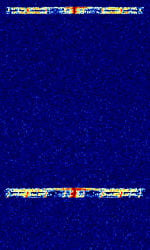 |
|
| Enhanced Digital Access Communications System (EDACS) | EDACS is a trunked radio system developed by General Electric and Ericsson. EDACS was invented by General Electric in the mid-80s and is currently owned by Harris Corporation. Harris has announced that EDACS systems will no longer be supported by 2017. | 160 MHzMegaHertz (MHz) 10^6 Hz — 941 MHzMegaHertz (MHz) 10^6 Hz | NFMNarrowband Frequency Modulation | GFSKGaussian Frequency-Shift Keying | 6.25 kHzKiloHertz (kHz) 10^3 Hz — 12.5 kHzKiloHertz (kHz) 10^3 Hz | Worldwide |  |
|
| FLASH-OFDM | Fast Low-latency Access with Seamless Handoff Orthogonal Frequency Division Multiplexing (FLASH-OFDMOrthogonal Frequency-Division Multiplexing) is a mobile data access technology developed by Flarion. | 450 MHzMegaHertz (MHz) 10^6 Hz | WFMWideband Frequency Modulation | MC-CDMACode Division Multiple Access | 2 MHzMegaHertz (MHz) 10^6 Hz | Finland, Slovakia, Germany, United States |  |
|
| FLEX | FLEX (Flexible Wide Area Paging Protocol) is Motorola's high speed one-way paging protocol that supports 1600, 3200, and 6400 bpsBits per second (bps). FLEX can transmit tone, numeric, alphanumeric, and binary data. | 152.6 MHzMegaHertz (MHz) 10^6 Hz — 931.938 MHzMegaHertz (MHz) 10^6 Hz | NFMNarrowband Frequency Modulation | FSKFrequency-Shift Keying, 4FSK4-Level Frequency Shift Keying | 5 kHzKiloHertz (kHz) 10^3 Hz | Worldwide |  |
|
| FM NBTV | FMFrequency Modulation NBTV is a method to send moving images in a very narrow bandwidth (maximum 3 KHzKiloHertz (kHz) 10^3 Hz) | 3 MHzMegaHertz (MHz) 10^6 Hz — 470 MHzMegaHertz (MHz) 10^6 Hz | SSBSingle-sideband modulation, FMFrequency Modulation | FMFrequency Modulation, BPSKBinary Phase-Shift Keying (1 bit per symbol) | 2.3 kHzKiloHertz (kHz) 10^3 Hz | Worldwide |  |
|
| FSK441 | FSK441 is a high speed meteor scatter communication mode. FSK441 uses a baudBaud (unit symbol Bd) is the unit for symbol rate or modulation rate in symbols per second. rate of 441 BdBaud (unit symbol Bd) is the unit for symbol rate or modulation rate in symbols per second.. | 144 MHzMegaHertz (MHz) 10^6 Hz — 444 MHzMegaHertz (MHz) 10^6 Hz | USBUpper Side Band Modulation (Radio, referring to reception and modulation mode)Universal Serial Bus (Computer, referring to USB Ports and cables) | FSKFrequency-Shift Keying | 1.75 kHzKiloHertz (kHz) 10^3 Hz | Worldwide |  |
|
| GK-2A LRIT ( Low-Rate Image Transmission ) | LRIT (Low-Rate Image Transmission) is used to transmit images on the GK-2A satellite | 1,692.1 MHzMegaHertz (MHz) 10^6 Hz | RAW | BPSKBinary Phase-Shift Keying (1 bit per symbol) | 170 kHzKiloHertz (kHz) 10^3 Hz | Asia-Pacific |  |
|
| GOES Data Collection System (DCS) | Comes from the geostationary satellites GOES 16 and GOES 17. Relays information about water levels, lightning strikes, and other information. | 1,679.9 MHzMegaHertz (MHz) 10^6 Hz — 1,680.2 MHzMegaHertz (MHz) 10^6 Hz | RAW | 8PSK8-Phase Phase-Shift Keying (3 bits per symbol) | 300 HzHertz (Hz), unit of frequency, defined as one cycle per second (1 Hz). — 1.2 kHzKiloHertz (kHz) 10^3 Hz | Worldwide | 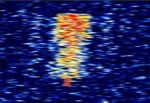 |
|
| GOES High Rate Information Transmission (HRIT) | GOES HRIT is a retransmission of satellite imagery and other information from the GOES-R series of satellites. | 1,694.1 MHzMegaHertz (MHz) 10^6 Hz | RAW | BPSKBinary Phase-Shift Keying (1 bit per symbol) | 1.205 MHzMegaHertz (MHz) 10^6 Hz | Worldwide | — |  |
| Global System for Mobile Communications (GSM) | GSM (Global System for Mobile Communications) is a standard developed by ETSIEuropean Telecommunications Standards Institute. An independent, not-for-profit, standardization organization in the telecommunications industry in Europe, developing global telecommunications standards. to describe the protocols for second-generation (2G) digital cellular networks used by mobile phones. As of 2014, it has become the default global standard for mobile communications. | 850 MHzMegaHertz (MHz) 10^6 Hz — 1,900 MHzMegaHertz (MHz) 10^6 Hz | RAW, AMAmplitude Modulation, FMFrequency Modulation | GMSKGaussian Minimum-Shift Keying | 200 kHzKiloHertz (kHz) 10^3 Hz | Worldwide | ||
| Golay Paging (GSC) | Golay Paging (or Golay Sequential Code, GSC) is a one-way 2-FSKFrequency-Shift Keying paging format developed by Motorola. It is capable of transmitting tone, numeric, alphanumeric, and voice pages. | 33 MHzMegaHertz (MHz) 10^6 Hz — 932 MHzMegaHertz (MHz) 10^6 Hz | NFMNarrowband Frequency Modulation | FSKFrequency-Shift Keying | 2.6 kHzKiloHertz (kHz) 10^3 Hz | Worldwide |  |
|
| Graw DFM-06 Weather Balloon (Radiosonde) | The DFM-06 is a standard radiosonde for most applications. It is perfectly suited for synoptic observations or military applications. | 400.01 MHzMegaHertz (MHz) 10^6 Hz — 405.99 MHzMegaHertz (MHz) 10^6 Hz | NFMNarrowband Frequency Modulation | FSKFrequency-Shift Keying | 20 kHzKiloHertz (kHz) 10^3 Hz | Europe |  |
|
| Graw DFM-17 (Radiosonde) | Radiosonde developed by Graw/Noris Group GmbH for upper air weather observation | 400 MHzMegaHertz (MHz) 10^6 Hz — 405.99 MHzMegaHertz (MHz) 10^6 Hz | NFMNarrowband Frequency Modulation | GFSKGaussian Frequency-Shift Keying | 10 kHzKiloHertz (kHz) 10^3 Hz | Worldwide |  |
|
| HC-265 Voice Scrambler | HC-265 is a Voice Scrambling mode developed by Hagelin Crypto for their HC-265 CRYPTOCOM secure voice unit. | 3 MHzMegaHertz (MHz) 10^6 Hz — 30 MHzMegaHertz (MHz) 10^6 Hz | USBUpper Side Band Modulation (Radio, referring to reception and modulation mode)Universal Serial Bus (Computer, referring to USB Ports and cables) | FSKFrequency-Shift Keying | 2.25 kHzKiloHertz (kHz) 10^3 Hz — 3 kHzKiloHertz (kHz) 10^3 Hz | Worldwide | 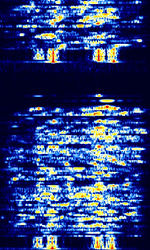 |
|
| HDMI RFI Clock | HDMI is a popular media source for delivering video, audio, all in the same stream. Unfortunately, there is massive interference from it when a neighboring SDR is near it. It can disrupt receiving to a great degree. | 148.35 MHzMegaHertz (MHz) 10^6 Hz — 742.5 MHzMegaHertz (MHz) 10^6 Hz | AMAmplitude Modulation | 700 kHzKiloHertz (kHz) 10^3 Hz | Worldwide | — |  |
|
| HORYU-4 Telemetry | Telemetry signal sent from the HORYU-4 university-class satellite Launched by Kyushu Institute of Technology in Japan | 437.375 MHzMegaHertz (MHz) 10^6 Hz | USBUpper Side Band Modulation (Radio, referring to reception and modulation mode)Universal Serial Bus (Computer, referring to USB Ports and cables) | BPSKBinary Phase-Shift Keying (1 bit per symbol) | Worldwide |  |
||
| Horus Binary 4FSK - v2 | An efficient RTTYRadio TeleTYpe-like 4FSK4-Level Frequency Shift Keying mode that transmits binary data, used for amateur high altitude balloon telemetry. Developed by the Project Horus group. | 431 MHzMegaHertz (MHz) 10^6 Hz — 434 MHzMegaHertz (MHz) 10^6 Hz | USBUpper Side Band Modulation (Radio, referring to reception and modulation mode)Universal Serial Bus (Computer, referring to USB Ports and cables) | 4FSK4-Level Frequency Shift Keying | 1 kHzKiloHertz (kHz) 10^3 Hz | Worldwide |  |
|
| Hyundai Mobis RKE-4F16 Key Fob | Hyundai Mobis RKE-4F16 Wireless Key Fob for Hyundai Sonata models 2014-Present. | 433.92 MHzMegaHertz (MHz) 10^6 Hz | WFMWideband Frequency Modulation | FSKFrequency-Shift Keying | 110 kHzKiloHertz (kHz) 10^3 Hz | Worldwide |  |
|
| ICARUS (International Cooperation for Animal Research Using Space) | ICARUS aims its services primarily at scientific groups that perform basic and application-oriented research with migrating animals. | 468.1 MHzMegaHertz (MHz) 10^6 Hz | NFMNarrowband Frequency Modulation | PSKPhase-Shift Keying | 32 kHzKiloHertz (kHz) 10^3 Hz | Worldwide |  |
|
| IMet-1 RS Radiosonde | Radiosonde launched on a weather balloon. | 402 MHzMegaHertz (MHz) 10^6 Hz — 406 MHzMegaHertz (MHz) 10^6 Hz | NFMNarrowband Frequency Modulation | AFSKAudio Frequency-Shift Keying | 0 HzHertz (Hz), unit of frequency, defined as one cycle per second (1 Hz). — 10 HzHertz (Hz), unit of frequency, defined as one cycle per second (1 Hz). | Israel, Belgium, United States, South Africa |  |
|
| ISM Band Weather sensor | Data returned from a consumer weather sensor using the AlectoV1 protocol. | 433 MHzMegaHertz (MHz) 10^6 Hz | AMAmplitude Modulation | 4.4 kHzKiloHertz (kHz) 10^3 Hz | Worldwide |  |
||
| ISM Band device | An ISM band device such as a power meter or a wireless doorbell. | 315 MHzMegaHertz (MHz) 10^6 Hz — 920 MHzMegaHertz (MHz) 10^6 Hz | AMAmplitude Modulation, NFMNarrowband Frequency Modulation | ASKAmplitude-Shift Keying, OOKOn-Off Keying Modulation, FSKFrequency-Shift Keying | 20 kHzKiloHertz (kHz) 10^3 Hz | Worldwide |  |
|
| Industrial key opener | key opener commonly used in industrial applications | 434 MHzMegaHertz (MHz) 10^6 Hz | AMAmplitude Modulation | 793 kHzKiloHertz (kHz) 10^3 Hz | Worldwide |  |
||
| Inmarsat Aero | Inmarsat Aero is the protocol that's used to link ground stations with aircraft via Inmarsat's satellite link. This protocol carries digital voice, fax and low speed data such as ACARS and ADS-C. | 1,545 MHzMegaHertz (MHz) 10^6 Hz — 3,687 MHzMegaHertz (MHz) 10^6 Hz | USBUpper Side Band Modulation (Radio, referring to reception and modulation mode)Universal Serial Bus (Computer, referring to USB Ports and cables) | PSKPhase-Shift Keying | 800 HzHertz (Hz), unit of frequency, defined as one cycle per second (1 Hz). — 10.5 MHzMegaHertz (MHz) 10^6 Hz | Worldwide | 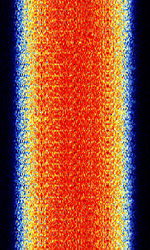 |
|
| Inmarsat IsatM2M | IsatM2M Service operated by Inmarsat on existing Inmarsat-D/D+ infrastructure. | 1,525 MHzMegaHertz (MHz) 10^6 Hz — 1,559 MHzMegaHertz (MHz) 10^6 Hz | USBUpper Side Band Modulation (Radio, referring to reception and modulation mode)Universal Serial Bus (Computer, referring to USB Ports and cables) | MFSKMultiple Frequency Shift-Keying | 1.024 kHzKiloHertz (kHz) 10^3 Hz | Worldwide |  |
|
| Inmarsat-C TDM | Inmarsat C provides two-way data and messaging communication services to and from virtually anywhere in the world. The low-cost terminals and antennas are small enough to be fitted to any size of ship. | 1,537.7 MHzMegaHertz (MHz) 10^6 Hz — 1,539.685 MHzMegaHertz (MHz) 10^6 Hz | USBUpper Side Band Modulation (Radio, referring to reception and modulation mode)Universal Serial Bus (Computer, referring to USB Ports and cables) | PSKPhase-Shift Keying | 2.5 kHzKiloHertz (kHz) 10^3 Hz | Worldwide |  |
|
| Inmarsat-D(D+) Downlink | Inmarsat D+ (and it's predecessor, Inmarsat D) was Inmarsat's satellite paging system. The main use of the technology was in tracking trucks and buoys and SCADA applications. | 1,525 MHzMegaHertz (MHz) 10^6 Hz — 1,559 MHzMegaHertz (MHz) 10^6 Hz | USBUpper Side Band Modulation (Radio, referring to reception and modulation mode)Universal Serial Bus (Computer, referring to USB Ports and cables) | MFSKMultiple Frequency Shift-Keying | 640 HzHertz (Hz), unit of frequency, defined as one cycle per second (1 Hz). | Worldwide |  |
|
| Instrument Landing System | Radio navigation system that allows aircraft to perform precision approaches in low visibility conditions. | 108 MHzMegaHertz (MHz) 10^6 Hz — 335 MHzMegaHertz (MHz) 10^6 Hz | AMAmplitude Modulation | 15 kHzKiloHertz (kHz) 10^3 Hz | Worldwide |  |
||
| Integrated Digital Enhanced Network (iDEN) | iDEN is a TDMATime Division Multiple Access-based digital wireless standard developed by Motorola. It is a type of trunked radio with cellular phone benefits. | 806 MHzMegaHertz (MHz) 10^6 Hz — 869 MHzMegaHertz (MHz) 10^6 Hz | NFMNarrowband Frequency Modulation | QAMQuadrature Amplitude Modulation, TDMATime Division Multiple Access | 18.5 kHzKiloHertz (kHz) 10^3 Hz | Worldwide |  |
|
| Integrated Services Digital Broadcasting—Terrestrial (ISDB-T) | ISDB-T (Integrated Services Digital Broadcasting – Terrestrial) is a new type of digital broadcasting system for providing audio, video and multimedia services. ISDB-T system was standardized at the Association of Radio Industries and Businesses (ARIB) in Japan. ISDB-T uses a modulation method referred to as Band Segmented Transmission (BST) OFDMOrthogonal Frequency-Division Multiplexing. | 470 MHzMegaHertz (MHz) 10^6 Hz — 770 MHzMegaHertz (MHz) 10^6 Hz | RAW | QPSKQuadrature Phase-Shift Keying (2 bits per symbol), 64QAM | 6 MHzMegaHertz (MHz) 10^6 Hz | Japan, Philippines, Argentina, Ecuador | — |  |
| Interferance signal from old computer screen | A very crunchy signal coming from my Old hyundai computer screen, the sound changes depending on what is shown on the screen | 639.006 MHzMegaHertz (MHz) 10^6 Hz | AMAmplitude Modulation, DSBDual Side Band Modulation | 23 kHzKiloHertz (kHz) 10^3 Hz | WORLDWIDE |  |
||
| Iridium | This is the L-band uplink/downlink for the Low Earth Orbit Iridium Satellite Constellation. This system is used for satellite based phone calls. | 1,616 MHzMegaHertz (MHz) 10^6 Hz — 1,626.5 MHzMegaHertz (MHz) 10^6 Hz | RAW | PSKPhase-Shift Keying | 31.5 kHzKiloHertz (kHz) 10^3 Hz | Worldwide |  |
|
| IsatData Pro | Inmarsat's M2M data service for SCADA asset tracking and reporting. | 1,525 MHzMegaHertz (MHz) 10^6 Hz — 1,559 MHzMegaHertz (MHz) 10^6 Hz | OQPSK | Worldwide | — |  |
||
| JT4 | JT4 is a 4-FSKFrequency-Shift Keying extreme weak-signal mode which is designed especially for Earth-Moon-Earth communications. It is part of the WSJT-X software. | USBUpper Side Band Modulation (Radio, referring to reception and modulation mode)Universal Serial Bus (Computer, referring to USB Ports and cables) | MFSKMultiple Frequency Shift-Keying | 17 HzHertz (Hz), unit of frequency, defined as one cycle per second (1 Hz). — 949 HzHertz (Hz), unit of frequency, defined as one cycle per second (1 Hz). | Worldwide |  |
||
| John Deere RTK Radio 450 | Real-time Kinematic GPS is a satellite navigation technique used to enhance the precision of position data derived from satellite-based positioning systems (global navigation satellite systems, GNSS) such as GPS, BeiDou, GLONASS, Galileo and NavIC. | 435 MHzMegaHertz (MHz) 10^6 Hz — 470 MHzMegaHertz (MHz) 10^6 Hz | FMFrequency Modulation | FSKFrequency-Shift Keying | 7.49 kHzKiloHertz (kHz) 10^3 Hz | Worldwide |  |
|
| Kenwood FleetSync | FleetSync is a manufacturer specific signaling standard which includes a number of features: unit ID, status, emergency button, inhibit, status check, GPS, and selective calling. | 150 MHzMegaHertz (MHz) 10^6 Hz — 850 MHzMegaHertz (MHz) 10^6 Hz | FSKFrequency-Shift Keying | 25 kHzKiloHertz (kHz) 10^3 Hz | Worldwide | — |  |
|
| Kia SVI-JFRGE04 Key Fob | Kia SVI-JFRGE04 Keyless entry transponder used for multiple Kia models, for model years 2014-2020 | NFMNarrowband Frequency Modulation | FSKFrequency-Shift Keying | 55 kHzKiloHertz (kHz) 10^3 Hz | Worldwide |  |
||
| LEOSAR Downlink | Cospas-Sarsat downlink from polar-orbiting weather satellites. The International Cospas-Sarsat Programme is a satellite-aided search and rescue initiative. | 1,544.5 MHzMegaHertz (MHz) 10^6 Hz | NFMNarrowband Frequency Modulation | PSKPhase-Shift Keying | 350 kHzKiloHertz (kHz) 10^3 Hz | Worldwide | 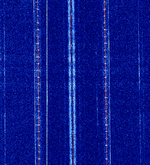 |
|
| LTE Uplink | Acquired via telecommunications carrier hardware during interference investigation of an Australian cellular network. | 700 MHzMegaHertz (MHz) 10^6 Hz — 2,600 MHzMegaHertz (MHz) 10^6 Hz | SC-FDMAFrequency Division Multiple Access | QPSKQuadrature Phase-Shift Keying (2 bits per symbol) | 5 MHzMegaHertz (MHz) 10^6 Hz | Worldwide |  |
|
| LTE420 MCX | Band 88 FDD | 423.7 MHzMegaHertz (MHz) 10^6 Hz | AMAmplitude Modulation | 16-QAMQuadrature Amplitude Modulation, OFDMOrthogonal Frequency-Division Multiplexing | 1.08 MHzMegaHertz (MHz) 10^6 Hz | Poland |  |
|
| Land Rover Discovery 4 Car Key | 2FSK transmission mode 20828 baudBaud (unit symbol Bd) is the unit for symbol rate or modulation rate in symbols per second., Information is transmitted by the code "Manchester", respectively, the data transfer rate is twice lower (7785.63 baudBaud (unit symbol Bd) is the unit for symbol rate or modulation rate in symbols per second.). | 433.93 MHzMegaHertz (MHz) 10^6 Hz | NFMNarrowband Frequency Modulation | 2FSK | 950 kHzKiloHertz (kHz) 10^3 Hz | Worldwide |  |
|
| Link-11 (UHF) | This is the UHFUltra High Frequency (300-3000 MHz) band variant of Link-11, which is transmitted on a FMFrequency Modulation carrier. The FMFrequency Modulation-demodulated baseband is identical to the HFHigh Frequency (3-30 MHz) Link-11 waveform. | 225 MHzMegaHertz (MHz) 10^6 Hz — 399.975 MHzMegaHertz (MHz) 10^6 Hz | NFMNarrowband Frequency Modulation | PSKPhase-Shift Keying | 30 kHzKiloHertz (kHz) 10^3 Hz | Worldwide |  |
|
| LoRa | LoRa (Long Range) is a proprietary low-power wide-area network modulation technique. | 433 MHzMegaHertz (MHz) 10^6 Hz — 915 MHzMegaHertz (MHz) 10^6 Hz | FMFrequency Modulation | CSS | 250 kHzKiloHertz (kHz) 10^3 Hz | Worldwide | 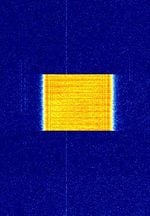 |
|
| Lockheed Martin LMS-6 (Radiosonde) | The LMS-6 is a radiosonde developed by Lockheed Martin which contains a temperature, barometric pressure (On the 1680 MHzMegaHertz (MHz) 10^6 Hz models only), and humidity sensor for upper air weather observations. | 400 MHzMegaHertz (MHz) 10^6 Hz — 1,682 MHzMegaHertz (MHz) 10^6 Hz | NFMNarrowband Frequency Modulation | GFSKGaussian Frequency-Shift Keying | 10 kHzKiloHertz (kHz) 10^3 Hz | Worldwide | 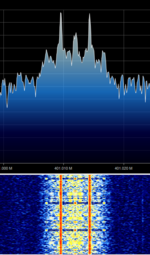 |
|
| Logic Trunked Radio (LTR) | Logic Trunked Radio, is an analog trunked radio format developed by EF Johnson Company. | 150 MHzMegaHertz (MHz) 10^6 Hz — 470 MHzMegaHertz (MHz) 10^6 Hz | NFMNarrowband Frequency Modulation | FSKFrequency-Shift Keying | 12.5 kHzKiloHertz (kHz) 10^3 Hz — 25 kHzKiloHertz (kHz) 10^3 Hz |  |
||
| Logitech(R) Wireless Mouse+Keyboard Signal | This signal comes from Logitech(R) Brand wireless mouse and keyboard combo unit. | 2,400 MHzMegaHertz (MHz) 10^6 Hz | RAW | PPMPulse Position Modulation, GFSKGaussian Frequency-Shift Keying | 500 kHzKiloHertz (kHz) 10^3 Hz | Worldwide | — |  |
| Low Rate Picture Transmission (LRPT) | The Low Rate Picture Transmission (LRPT) is a digital transmission system, commonly transmitted by METEOR-M satellites, used to deliver weather images and data. | 137 MHzMegaHertz (MHz) 10^6 Hz — 138 MHzMegaHertz (MHz) 10^6 Hz | RAW | QPSKQuadrature Phase-Shift Keying (2 bits per symbol) | 120 kHzKiloHertz (kHz) 10^3 Hz | Worldwide | — |  |
| M20 Radiosonde | Telemetry signal transmitted by M20 radiosondes | 400.15 MHzMegaHertz (MHz) 10^6 Hz — 406 MHzMegaHertz (MHz) 10^6 Hz | NFMNarrowband Frequency Modulation | FSKFrequency-Shift Keying | 30 kHzKiloHertz (kHz) 10^3 Hz | Worldwide |  |
|
| MDC-4800 | Motorola's MDC-4800 is a data protocol that was used in ARDIS and DataTAC Networks as well as in MDTMobile Data Terminal, A mobile data terminal (MDT) is a computerized device used in public transit vehicles, taxicabs, commercial trucking fleets, military logistics, and emergency vehicles, such as police cars, to communicate with a central dispatch office. networks. RD-LAP was derived from this mode. Also known as Motorola Mobile Data Communications System (MODACOM) | 150 MHzMegaHertz (MHz) 10^6 Hz — 850 MHzMegaHertz (MHz) 10^6 Hz | NFMNarrowband Frequency Modulation | GFSKGaussian Frequency-Shift Keying | 12.5 kHzKiloHertz (kHz) 10^3 Hz | Worldwide |  |
|
| MDC1200 | MDC (Motorola Data Communications), also known as Stat-Alert, MDC-1200 and MDC-600, is a Motorola two-way radio low-speed data system. | 30 MHzMegaHertz (MHz) 10^6 Hz — 960 MHzMegaHertz (MHz) 10^6 Hz | FMFrequency Modulation | AFSKAudio Frequency-Shift Keying | 12.5 kHzKiloHertz (kHz) 10^3 Hz — 20 kHzKiloHertz (kHz) 10^3 Hz | Worldwide |  |
|
| MMP-4800 | MMP-4800 was a MDTMobile Data Terminal, A mobile data terminal (MDT) is a computerized device used in public transit vehicles, taxicabs, commercial trucking fleets, military logistics, and emergency vehicles, such as police cars, to communicate with a central dispatch office. (Mobile Data Terminal) protocol developed by Canadian company Mobile Data International (MDI) in 1982 for their Mobile Data Terminals. Used by public safety and commercial industries. Phased out. | 150 MHzMegaHertz (MHz) 10^6 Hz — 900 MHzMegaHertz (MHz) 10^6 Hz | NFMNarrowband Frequency Modulation | 12.5 kHzKiloHertz (kHz) 10^3 Hz — 25 kHzKiloHertz (kHz) 10^3 Hz | Worldwide |  |
||
| MOBITEX | MOBITEX is an OSI based open standard, national public access wireless packet-switched data network. | 400 MHzMegaHertz (MHz) 10^6 Hz — 900 MHzMegaHertz (MHz) 10^6 Hz | NFMNarrowband Frequency Modulation | GMSKGaussian Minimum-Shift Keying, FFSKFast Frequency-Shift Keying | 15 kHzKiloHertz (kHz) 10^3 Hz | Worldwide |  |
|
| MODAT | MODAT is a 7-tone Automatic Number Identification (ANI) status system used by handheld radios. It provides unit ID and emergency statuses to receiving radio sets when transmitted. | 30 MHzMegaHertz (MHz) 10^6 Hz — 800 MHzMegaHertz (MHz) 10^6 Hz | NFMNarrowband Frequency Modulation | MFSKMultiple Frequency Shift-Keying | 5 kHzKiloHertz (kHz) 10^3 Hz | Worldwide | 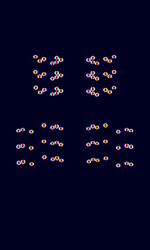 |
|
| MONITOR-2(RS39S) | Monitor-2 is a Russian 3u Cubesat used for cosmic flare observation. It is most likely only active when above Russia. | 435.815 MHzMegaHertz (MHz) 10^6 Hz | FMFrequency Modulation | AFSKAudio Frequency-Shift Keying | 12.5 kHzKiloHertz (kHz) 10^3 Hz | Worldwide |  |
|
| MPT 1327 | MPT1327 (Ministry of Posts and Telegraph 1327) is a signaling protocol standard for analog trunked radio | 162.5 MHzMegaHertz (MHz) 10^6 Hz — 800 MHzMegaHertz (MHz) 10^6 Hz | NFMNarrowband Frequency Modulation | FFSKFast Frequency-Shift Keying, FMFrequency Modulation | 10 kHzKiloHertz (kHz) 10^3 Hz — 25 kHzKiloHertz (kHz) 10^3 Hz | Worldwide |  |
|
| MRZ-3MK Weather Balloon (radiosonde) | MRZ-3MK is a Russian weather radiosonde. | 1,680 MHzMegaHertz (MHz) 10^6 Hz | AMAmplitude Modulation | PFM | 6 MHzMegaHertz (MHz) 10^6 Hz | Russia | — |  |
| MRZ-N1 Weather Balloon (radiosonde) | MRZ-N1 is a russian weather radiosonde. | 403 MHzMegaHertz (MHz) 10^6 Hz | FMFrequency Modulation | FSKFrequency-Shift Keying | 5 kHzKiloHertz (kHz) 10^3 Hz | Russia |  |
|
| Mazda SKE126-01 Key Fob | SKE126-01 Key Fob used for multiple Mazda models between 2006-2014. Manufactured by Mitsubishi Electric Company. | 433.413 MHzMegaHertz (MHz) 10^6 Hz | WFMWideband Frequency Modulation | FSKFrequency-Shift Keying | 100 kHzKiloHertz (kHz) 10^3 Hz | Worldwide |  |
|
| Meteomodem M10 Weather Balloon (Radiosonde) | Weather balloon (radiosonde) telemetry data. | 400 MHzMegaHertz (MHz) 10^6 Hz — 406 MHzMegaHertz (MHz) 10^6 Hz | NFMNarrowband Frequency Modulation | PSKPhase-Shift Keying | 30 kHzKiloHertz (kHz) 10^3 Hz | Worldwide |  |
|
| Meteomodem PilotSonde Weather Balloon | Weather balloon telemetry data. | 400 MHzMegaHertz (MHz) 10^6 Hz — 406 MHzMegaHertz (MHz) 10^6 Hz | NFMNarrowband Frequency Modulation | FSKFrequency-Shift Keying | 15 kHzKiloHertz (kHz) 10^3 Hz | Worldwide |  |
|
| Meteosat WEFAX | Meteosat WEFAX is a WEFAX used to transmit satellite images via Meteosat Satellites. WEFAX was introduced with the first Meteosat in 1977. | 1,691 MHzMegaHertz (MHz) 10^6 Hz | FMFrequency Modulation | AMAmplitude Modulation, FMFrequency Modulation | Worldwide |  |
||
| Microsonde Mark II Weather Balloon - LORAN-C signal (Radiosonde) | Weather balloon telemetry data. The LORAN-C signal is mixed into the carrier. | 400 MHzMegaHertz (MHz) 10^6 Hz — 406 MHzMegaHertz (MHz) 10^6 Hz | WFMWideband Frequency Modulation | FSKFrequency-Shift Keying | 130 kHzKiloHertz (kHz) 10^3 Hz | Worldwide |  |
|
| Milstar | UHFUltra High Frequency (300-3000 MHz) FHSS Downlink of Milstar, a US joint military service satellite communications system that provides secure, jam resistant, worldwide communications. Nicknamed 'Waterdroplets' for it's characteristic waveform and sound. | 243.785 MHzMegaHertz (MHz) 10^6 Hz — 243.822 MHzMegaHertz (MHz) 10^6 Hz | RAW | FHSS | 50 kHzKiloHertz (kHz) 10^3 Hz | Worldwide |  |
|
| Morse Code (CW) | CWContinuous Wave Morse Code is the simplest form of transmission found virtually all over the RFRadio Frequency bands for a variety of uses. The most common use of this is for Call-sign Beacons by both Amateur and Military operators. | 3 kHzKiloHertz (kHz) 10^3 Hz — 250,000 MHzMegaHertz (MHz) 10^6 Hz | CWContinuous Wave | OOKOn-Off Keying Modulation | Worldwide |  |
||
| Motorola ASTRO 25 HPD Air Interface | Motorola's ASTRO 25 High Performance Data Air Interface allows Motorola ASTRO 25 HPD modems to transfer data at up to 96 kbpsKilobits per second (kbps) over a 25 kHzKiloHertz (kHz) 10^3 Hz channel in the 700 MHzMegaHertz (MHz) 10^6 Hz or 800 MHzMegaHertz (MHz) 10^6 Hz bands. | 769 MHzMegaHertz (MHz) 10^6 Hz — 869 MHzMegaHertz (MHz) 10^6 Hz | RAW | QAMQuadrature Amplitude Modulation | 17.7 kHzKiloHertz (kHz) 10^3 Hz | United States |  |
|
| Motorola SECURENET | Motorola SECURENET ("analog" encryption) was a secure voice option for conventional and Motorola Type II trunked systems, encoding the voice using 12kbps CVSD and encrypting the bitstream. It is easily identified by the 6 kHzKiloHertz (kHz) 10^3 Hz tone at the end of transmission. As it is not 12.5 kHzKiloHertz (kHz) 10^3 Hz FCC narrowbanding mandate compliant, it does not see much use anymore. | 137 MHzMegaHertz (MHz) 10^6 Hz — 941 MHzMegaHertz (MHz) 10^6 Hz | FMFrequency Modulation | FSKFrequency-Shift Keying | 16 kHzKiloHertz (kHz) 10^3 Hz | Worldwide |  |
|
| Motorola Type II | Radio trunking control channel. | 136 MHzMegaHertz (MHz) 10^6 Hz — 941 MHzMegaHertz (MHz) 10^6 Hz | NFMNarrowband Frequency Modulation | FSKFrequency-Shift Keying | 16 kHzKiloHertz (kHz) 10^3 Hz | Worldwide |  |
|
| Multiple sub-Nyquist Sampling Encoding (MUSE) | Multiplite sub-Nyquist Sampling Encoding (MUSE) also known as Hi-Vision was a early analogue high-defition television standard developed by NHK Science and Technical Research Laboratories. Replaced by digital ISDB broadcast since 2007. | 8,000 MHzMegaHertz (MHz) 10^6 Hz — 12,000 MHzMegaHertz (MHz) 10^6 Hz | RAW | FMFrequency Modulation, DPCM, VSBVestigial Sideband Modulation | 8 MHzMegaHertz (MHz) 10^6 Hz — 27 MHzMegaHertz (MHz) 10^6 Hz | Worldwide | — |  |
| Multiplexed Analogue Components (MAC) | Multiplexed Analogue Components (MAC/packet) family was a analogue television broadcasting standard. Replaced by digital broadcast. | 54 MHzMegaHertz (MHz) 10^6 Hz — 18,000 MHzMegaHertz (MHz) 10^6 Hz | RAW | QAMQuadrature Amplitude Modulation, VSBVestigial Sideband Modulation, FMFrequency Modulation, AMAmplitude Modulation, 2PSKBinary Phase-Shift Keying (1 bit per symbol), 4PSKQuadrature Phase-Shift Keying (2 bits per symbol) | 7.8 MHzMegaHertz (MHz) 10^6 Hz — 22 MHzMegaHertz (MHz) 10^6 Hz | Worldwide | — |  |
| Multitone Paging | Multitone Paging signal, developed by Multitone Electronics in the UK. Uses similar coding to POCSAG but the headers are different and only work with Multitone's range of paging products | 25 MHzMegaHertz (MHz) 10^6 Hz — 470 MHzMegaHertz (MHz) 10^6 Hz | NFMNarrowband Frequency Modulation | FFSKFast Frequency-Shift Keying | 12.5 kHzKiloHertz (kHz) 10^3 Hz — 25 kHzKiloHertz (kHz) 10^3 Hz | Worldwide |  |
|
| NATEL | NATEL is a 5-tone selcall mode defined by Scandinavian National Telephone recommendations. | 30 MHzMegaHertz (MHz) 10^6 Hz — 800 MHzMegaHertz (MHz) 10^6 Hz | NFMNarrowband Frequency Modulation | MFSKMultiple Frequency Shift-Keying | 5 kHzKiloHertz (kHz) 10^3 Hz | Worldwide |  |
|
| NB-IOT | Narrowband Internet of Things (NB-IoTInternet of Things) is a Low Power Wide Area Network (LPWAN) radio technology standard developed by 3GPP to enable a wide range of cellular devices and services. | 700 MHzMegaHertz (MHz) 10^6 Hz — 1,900 MHzMegaHertz (MHz) 10^6 Hz | AMAmplitude Modulation | QPSKQuadrature Phase-Shift Keying (2 bits per symbol) | 200 kHzKiloHertz (kHz) 10^3 Hz | Worldwide |  |
|
| NFM Voice | Used in analog walkie-talkies and communication systems. | 27 MHzMegaHertz (MHz) 10^6 Hz — 864 MHzMegaHertz (MHz) 10^6 Hz | NFMNarrowband Frequency Modulation | FMFrequency Modulation | 5 kHzKiloHertz (kHz) 10^3 Hz — 30 kHzKiloHertz (kHz) 10^3 Hz | Worldwide |  |
|
| NTSC Broadcast | National Television System Committee (NTSC) Television broadcast is an analogue television broadcast mode. Currently being phased out in parts of the world in favor of digital broadcast. | 54 MHzMegaHertz (MHz) 10^6 Hz — 806 MHzMegaHertz (MHz) 10^6 Hz | RAW | QAMQuadrature Amplitude Modulation, VSBVestigial Sideband Modulation | 6 MHzMegaHertz (MHz) 10^6 Hz | Worldwide |  |
|
| National Public Alerting System (NPAS) | The National Public Alerting System (NPAS), branded to consumers as Alert Ready, is a national warning system in Canada. The tone does not carry any information to be decoded. Information about Emergencies is communicated via on screen text and text-to-speech. | Canada |  |
|||||
| Next Generation Digital Narrowband (NXDN) | NXDN is a digital narrowband trunked radio protocol used in commercial, business & industry, transport and Public Safety professional radio systems. | 136 MHzMegaHertz (MHz) 10^6 Hz — 520 MHzMegaHertz (MHz) 10^6 Hz | NFMNarrowband Frequency Modulation | 4FSK4-Level Frequency Shift Keying | 6.25 kHzKiloHertz (kHz) 10^3 Hz — 12.5 kHzKiloHertz (kHz) 10^3 Hz | Worldwide |  |
|
| Nissan Car Key | Wireless entry rolling code car key. | 301.5 MHzMegaHertz (MHz) 10^6 Hz — 433 MHzMegaHertz (MHz) 10^6 Hz | AMAmplitude Modulation | 40 kHzKiloHertz (kHz) 10^3 Hz | Worldwide |  |
||
| OTP-2 Satellite Musical Beacon | Musical transmission originating from the OTP-2 Cubesat | 400.502 MHzMegaHertz (MHz) 10^6 Hz | NFMNarrowband Frequency Modulation | FSKFrequency-Shift Keying | 4.2 kHzKiloHertz (kHz) 10^3 Hz | Worldwide |  |
|
| OpenSky | OpenSky is an encrypted TDMATime Division Multiple Access protocol that is heavily used but is being phased out by the Pennsylvania State Police. No one other than the intended user has been able to decrypt the signal. | 700 MHzMegaHertz (MHz) 10^6 Hz — 1,000 MHzMegaHertz (MHz) 10^6 Hz | NFMNarrowband Frequency Modulation | TDMATime Division Multiple Access, 4GFSK | 20.07 kHzKiloHertz (kHz) 10^3 Hz | Worldwide |  |
|
| OpenWay CENTRON Smart-Meter | This is a signal from a OpenWay Centron Electric 'Smart Meter'. Each house is now fitted with one of these, and they are strong - typically 50 dBThe decibel (dB) is a logarithmic unit used to express the ratio of two values of a physical quantity, here the strength of a received signal. above the atmospheric noise level. | 902 MHzMegaHertz (MHz) 10^6 Hz — 928 MHzMegaHertz (MHz) 10^6 Hz | BPSKBinary Phase-Shift Keying (1 bit per symbol) | 15 kHzKiloHertz (kHz) 10^3 Hz | United States | — |  |
|
| PACKET | Packet, also known as FSK300, AFSK1200, BPSK300, QPSK600, BPSK1200, QPSK2400, AX.25 and IL2P, is a packet based protocol derived from X.25 and HDLC computer network protocols. Packet radio is a synchronous system in which data is transmitted in frames. | 3 MHzMegaHertz (MHz) 10^6 Hz — 800 MHzMegaHertz (MHz) 10^6 Hz | USBUpper Side Band Modulation (Radio, referring to reception and modulation mode)Universal Serial Bus (Computer, referring to USB Ports and cables) | FSKFrequency-Shift Keying | 730 HzHertz (Hz), unit of frequency, defined as one cycle per second (1 Hz). | Worldwide |  |
|
| PAL Broadcast | Phase Alternating Line (PAL) Analogue Television Broadcast. Now phased out in most of the world. | 47 MHzMegaHertz (MHz) 10^6 Hz — 862 MHzMegaHertz (MHz) 10^6 Hz | RAW | QAMQuadrature Amplitude Modulation, VSBVestigial Sideband Modulation, FMFrequency Modulation | 6 MHzMegaHertz (MHz) 10^6 Hz — 8 MHzMegaHertz (MHz) 10^6 Hz | Worldwide |  |
|
| PI4 | PI4 (PharusIgnis4) is a 4-MFSKMultiple Frequency Shift-Keying mode designed for amateur radio beacons. It is designed to work via different propagation modes. | 28 MHzMegaHertz (MHz) 10^6 Hz — 1,296 MHzMegaHertz (MHz) 10^6 Hz | USBUpper Side Band Modulation (Radio, referring to reception and modulation mode)Universal Serial Bus (Computer, referring to USB Ports and cables) | MFSKMultiple Frequency Shift-Keying | 709 HzHertz (Hz), unit of frequency, defined as one cycle per second (1 Hz). | Worldwide |  |
|
| POCSAG | POCSAG (Post Office Code Standardisation Advisory Group), also known as Super-POCSAG, Radio Paging Code No. 1 or RPC1, is a one-way 2FSK paging protocol that supports 512, 1200, and 2400 bpsBits per second (bps). | 25 MHzMegaHertz (MHz) 10^6 Hz — 932 MHzMegaHertz (MHz) 10^6 Hz | NFMNarrowband Frequency Modulation | FSKFrequency-Shift Keying | 9 kHzKiloHertz (kHz) 10^3 Hz | Worldwide |  |
|
| PSK Paging link | Also known as PSKPhase-Shift Keying paging, is a signal that allows side-by-side PSKPhase-Shift Keying to exist in AFSKAudio Frequency-Shift Keying paging links, allowing for more dynamically processed DSP available. | 150 MHzMegaHertz (MHz) 10^6 Hz — 470 MHzMegaHertz (MHz) 10^6 Hz | FMFrequency Modulation | PSKPhase-Shift Keying | 12.5 kHzKiloHertz (kHz) 10^3 Hz | United States |  |
|
| Phase Shift Keying (PSK) | PSKPhase-Shift Keying is a digital teletype mode based on Phase-Shift Keying (PSKPhase-Shift Keying) modulation. The most popular amateur radio PSKPhase-Shift Keying mode is PSKPhase-Shift Keying 31. | 1.838 MHzMegaHertz (MHz) 10^6 Hz — 909 MHzMegaHertz (MHz) 10^6 Hz | USBUpper Side Band Modulation (Radio, referring to reception and modulation mode)Universal Serial Bus (Computer, referring to USB Ports and cables) | PSKPhase-Shift Keying | 10 HzHertz (Hz), unit of frequency, defined as one cycle per second (1 Hz). — 1 kHzKiloHertz (kHz) 10^3 Hz | Worldwide | 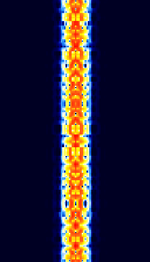 |
|
| Possible quarry telemetry | possible quarry telemetry observed on 462.775, appears to pulse every second | 462.775 MHzMegaHertz (MHz) 10^6 Hz | NFMNarrowband Frequency Modulation | 8 kHzKiloHertz (kHz) 10^3 Hz | Shellharbour, Australia |  |
||
| Primary Aeronautical Surveillance Radar | A Primary radar (PSR Primary Surveillance Radar) is a conventional radar sensor that illuminates a large portion of space with an electromagnetic wave and receives back the reflected waves from targets within that space. | 1,215 MHzMegaHertz (MHz) 10^6 Hz — 1,400 MHzMegaHertz (MHz) 10^6 Hz | RAW | Pulse | 3 MHzMegaHertz (MHz) 10^6 Hz | Worldwide | 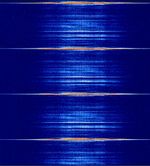 |
|
| ProVoice | ProVoice is a digital voice mode used in EDACS trunked systems. | 160 MHzMegaHertz (MHz) 10^6 Hz — 941 MHzMegaHertz (MHz) 10^6 Hz | NFMNarrowband Frequency Modulation | GFSKGaussian Frequency-Shift Keying | Worldwide |  |
||
| Project 25 (P25) | Project 25 (P25 or APCO-25) is a trunked radio standard developed by The Association of Public Safety Communications Officials International (APCO-25) for use with public safety organizations around the world. | 136 MHzMegaHertz (MHz) 10^6 Hz — 939 MHzMegaHertz (MHz) 10^6 Hz | NFMNarrowband Frequency Modulation | PSKPhase-Shift Keying, C4FMContinuous 4-Level Frequency Modulation, TDMATime Division Multiple Access | 12.5 kHzKiloHertz (kHz) 10^3 Hz | Worldwide |  |
|
| Pursuit Wireless Car Key | Pursuit series wireless car alarm entry key, for use on vehicles equipped with Pursuit Series Car Alarm System. | 301.5 MHzMegaHertz (MHz) 10^6 Hz — 434 MHzMegaHertz (MHz) 10^6 Hz | AMAmplitude Modulation | AMAmplitude Modulation | 40 kHzKiloHertz (kHz) 10^3 Hz | Worldwide | 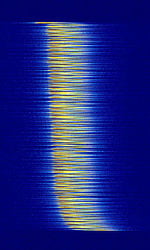 |
|
| Q65 | Q65 is a 65-FSKFrequency-Shift Keying extreme weak-signal mode which is designed for Earth-Moon-Earth communications and fast-fading propagation modes such as tropospheric scatter, rain scatter and trans-equatorial propagation. It offers a variety of submodes. Q65 is part of the WSJT-X software. | 50.275 MHzMegaHertz (MHz) 10^6 Hz — 144.17 MHzMegaHertz (MHz) 10^6 Hz | USBUpper Side Band Modulation (Radio, referring to reception and modulation mode)Universal Serial Bus (Computer, referring to USB Ports and cables) | MFSKMultiple Frequency Shift-Keying | 19 HzHertz (Hz), unit of frequency, defined as one cycle per second (1 Hz). — 1.733 kHzKiloHertz (kHz) 10^3 Hz | Worldwide |  |
|
| QO-100-modem | High speed modem for QO-100 (Es'hail 2) amateur satellite narrow transponder. | 10,489.5 MHzMegaHertz (MHz) 10^6 Hz — 10,490 MHzMegaHertz (MHz) 10^6 Hz | USBUpper Side Band Modulation (Radio, referring to reception and modulation mode)Universal Serial Bus (Computer, referring to USB Ports and cables) | QPSKQuadrature Phase-Shift Keying (2 bits per symbol), BPSKBinary Phase-Shift Keying (1 bit per symbol), APSK | 2.7 kHzKiloHertz (kHz) 10^3 Hz |  |
||
| Quansheng UVK5 Digital Text Message | A digital text message protocol included in the stock firmware of some Quansheng brand handheld radios to send up to 30 characters in a short packet type message. | 137 MHzMegaHertz (MHz) 10^6 Hz — 480 MHzMegaHertz (MHz) 10^6 Hz | FMFrequency Modulation | AFSKAudio Frequency-Shift Keying, FSKFrequency-Shift Keying | 12 kHzKiloHertz (kHz) 10^3 Hz | Worldwide | 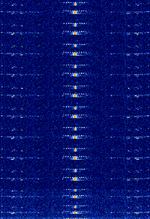 |
|
| Radio Data Link Access Procedure (RD-LAP) | Motorola's Radio Data Link Access Procedure (RD-LAP) is a 1G protocol that was used in ARDIS and DataTAC Networks, and is still used in some MDTMobile Data Terminal, A mobile data terminal (MDT) is a computerized device used in public transit vehicles, taxicabs, commercial trucking fleets, military logistics, and emergency vehicles, such as police cars, to communicate with a central dispatch office.'s, as well as gas companies, police departments, fire departments, financial companies, etc. | 150 MHzMegaHertz (MHz) 10^6 Hz — 850 MHzMegaHertz (MHz) 10^6 Hz | NFMNarrowband Frequency Modulation | 4FSK4-Level Frequency Shift Keying | 12.5 kHzKiloHertz (kHz) 10^3 Hz — 25 kHzKiloHertz (kHz) 10^3 Hz | Worldwide |  |
|
| ReFLEX | ReFLEX is a two-way paging variant of FLEX. | 896 MHzMegaHertz (MHz) 10^6 Hz — 941 MHzMegaHertz (MHz) 10^6 Hz | NFMNarrowband Frequency Modulation | FFSKFast Frequency-Shift Keying | 40 kHzKiloHertz (kHz) 10^3 Hz | United States |  |
|
| SECAM | Sequential Colour with Memory (SECAM) Analogue Television Broadcast. Now phased out in most of the world. | 47 MHzMegaHertz (MHz) 10^6 Hz — 862 MHzMegaHertz (MHz) 10^6 Hz | RAW | VSBVestigial Sideband Modulation, FMFrequency Modulation | 6 MHzMegaHertz (MHz) 10^6 Hz — 8 MHzMegaHertz (MHz) 10^6 Hz | Worldwide | — |  |
| SIGFOX | SIGFOX is a IoTInternet of Things wireless network system utilizing ETSIEuropean Telecommunications Standards Institute. An independent, not-for-profit, standardization organization in the telecommunications industry in Europe, developing global telecommunications standards.'s specification for Low Throughput Networks (LTN) and Ultra Narrow-Band (UNB) modulation. | 868 MHzMegaHertz (MHz) 10^6 Hz — 868.6 MHzMegaHertz (MHz) 10^6 Hz | RAW | BPSKBinary Phase-Shift Keying (1 bit per symbol) | 200 kHzKiloHertz (kHz) 10^3 Hz | Worldwide |  |
|
| STP403 Bus PIT System | STP403 is a bus PITPassenger Information Terminals, such as bus timetable displays at bus stops system used to update digital displays at bus stops. STP403 was developed by French companies INEO and CESATEC. | 164 MHzMegaHertz (MHz) 10^6 Hz — 468.488 MHzMegaHertz (MHz) 10^6 Hz | NFMNarrowband Frequency Modulation | FFSKFast Frequency-Shift Keying | 8 kHzKiloHertz (kHz) 10^3 Hz | France |  |
|
| Schneider Trio E-Series Modem | Schneider Trio E-Series Modems are industrial modems used for SCADA, telemetry, and other ASCII-based messaging applications. | 370 MHzMegaHertz (MHz) 10^6 Hz — 518 MHzMegaHertz (MHz) 10^6 Hz | USBUpper Side Band Modulation (Radio, referring to reception and modulation mode)Universal Serial Bus (Computer, referring to USB Ports and cables) | FSKFrequency-Shift Keying, GMSKGaussian Minimum-Shift Keying | 12.5 kHzKiloHertz (kHz) 10^3 Hz — 25 kHzKiloHertz (kHz) 10^3 Hz | Worldwide |  |
|
| Secondary surveillance radar (SSR) | Secondary surveillance radar (SSR)is a radar system used in air traffic control. A surveillance radar system which uses transmitters/receivers (interrogators) and transponders. | 1,030 MHzMegaHertz (MHz) 10^6 Hz | RAW | PPMPulse Position Modulation | 3 MHzMegaHertz (MHz) 10^6 Hz | Worldwide |  |
|
| Sensus Water meter (Acquisition units) | These are samples from the Sensus Water meters. They are a FHSS ASKAmplitude-Shift Keying encoded data transmission for purposes of providing municipalities water meter telemetry (for billing how much water you use). | 902 MHzMegaHertz (MHz) 10^6 Hz — 927 MHzMegaHertz (MHz) 10^6 Hz | ASKAmplitude-Shift Keying, FHSS | 175 MHzMegaHertz (MHz) 10^6 Hz | Worldwide | — |  |
|
| SiriusXM Satellite Radio | SiriusXM Satellite Radio: Terrestrial Repeater Signal | 2,332.5 MHzMegaHertz (MHz) 10^6 Hz — 2,345 MHzMegaHertz (MHz) 10^6 Hz | RAW | OFDMOrthogonal Frequency-Division Multiplexing, PSKPhase-Shift Keying | 12.5 MHzMegaHertz (MHz) 10^6 Hz | United States |  |
|
| Slow-Scan Television (SSTV) | Slow-scan television (SSTV) is a method for picture transmission used by amateur radio operators to transmit and receive images. | 3 MHzMegaHertz (MHz) 10^6 Hz — 450 MHzMegaHertz (MHz) 10^6 Hz | USBUpper Side Band Modulation (Radio, referring to reception and modulation mode)Universal Serial Bus (Computer, referring to USB Ports and cables), LSBLower Side Band Modulation, NFMNarrowband Frequency Modulation | FMFrequency Modulation | 3 kHzKiloHertz (kHz) 10^3 Hz | Worldwide |  |
|
| Smart TV Interference | Interference from Smart TV units | 528 MHzMegaHertz (MHz) 10^6 Hz | USBUpper Side Band Modulation (Radio, referring to reception and modulation mode)Universal Serial Bus (Computer, referring to USB Ports and cables) | 84 kHzKiloHertz (kHz) 10^3 Hz | Worldwide |  |
||
| Soyuz-MS spacecraft telemetry | Russian spacecraft telemetry system. | 166 MHzMegaHertz (MHz) 10^6 Hz — 634 MHzMegaHertz (MHz) 10^6 Hz | USBUpper Side Band Modulation (Radio, referring to reception and modulation mode)Universal Serial Bus (Computer, referring to USB Ports and cables) | PCM, FMFrequency Modulation | 250 kHzKiloHertz (kHz) 10^3 Hz | Worldwide |  |
|
| Supervisory Control And Data Acquisition (SCADA) | Supervisory Control And Data Acquisition (SCADA) is a control system architecture that is used in industrial applications for computerized automated systems. Wireless telemetry is used on RTU's to send data to control units for operators to utilize. | 413 MHzMegaHertz (MHz) 10^6 Hz — 950 MHzMegaHertz (MHz) 10^6 Hz | FMFrequency Modulation | FSKFrequency-Shift Keying | 12 kHzKiloHertz (kHz) 10^3 Hz |  |
||
| Switching Electronic Interference | Commonly experienced interfering RFRadio Frequency emissions from switching electronics (i.e. switched-mode power supplies, power converters, digital electronics, etc.) which use inductors (coils) that unintentionally act as antennas. | 10 kHzKiloHertz (kHz) 10^3 Hz — 200 MHzMegaHertz (MHz) 10^6 Hz | Worldwide |  |
||||
| Tactical Air Navigation System (TACAN) | Radio navigation technology that measures the slant range (distance) between an aircraft and a ground station by timing the propagation delay of radio signals. | 960 MHzMegaHertz (MHz) 10^6 Hz — 1,213 MHzMegaHertz (MHz) 10^6 Hz | PAMPulse Amplitude Modulation | Worldwide |  |
|||
| Terrestrial Trunked Radio (TETRA) | TETRA is a professional mobile radio and two-way transceiver (walkie-talkie) specification | 380 MHzMegaHertz (MHz) 10^6 Hz — 860 MHzMegaHertz (MHz) 10^6 Hz | NFMNarrowband Frequency Modulation | PSKPhase-Shift Keying | 25 kHzKiloHertz (kHz) 10^3 Hz | Worldwide |  |
|
| Tetrapol | Tetrapol is a digital professional mobile radio standard for digital voice and data communication used by public safety and military throughout Europe. Tetrapol was originally developed by Matra Communication (Currently part of EADS/Airbus Group) in France in the 1980's. | 370 MHzMegaHertz (MHz) 10^6 Hz — 400 MHzMegaHertz (MHz) 10^6 Hz | NFMNarrowband Frequency Modulation | GMSKGaussian Minimum-Shift Keying | 10 kHzKiloHertz (kHz) 10^3 Hz — 12.5 kHzKiloHertz (kHz) 10^3 Hz | Europe |  |
|
| Tire Pressure Monitoring System (TPMS) | TPMS (Tire-Pressure Monitoring System), more specifically Direct TPMS (dTPMS), is a system that uses pressure sensors to monitor tire pressure on vehicles. | 315 MHzMegaHertz (MHz) 10^6 Hz — 434 MHzMegaHertz (MHz) 10^6 Hz | AMAmplitude Modulation | FSKFrequency-Shift Keying | 100 kHzKiloHertz (kHz) 10^3 Hz | Worldwide | 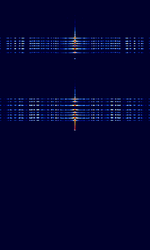 |
|
| Total Access Communication System (TACS) | A first generation analogue mobile cellular system which operated in the United Kingdom and a handful of other countries in Europe. It is also the EU's form of AMPS. | 872 MHzMegaHertz (MHz) 10^6 Hz — 960 MHzMegaHertz (MHz) 10^6 Hz | NFMNarrowband Frequency Modulation | FMFrequency Modulation, FSKFrequency-Shift Keying | 25 kHzKiloHertz (kHz) 10^3 Hz | Europe |  |
|
| Toyota Car Key | Wireless entry rolling code car key. | 315 MHzMegaHertz (MHz) 10^6 Hz — 433 MHzMegaHertz (MHz) 10^6 Hz | AMAmplitude Modulation | 40 kHzKiloHertz (kHz) 10^3 Hz | Worldwide |  |
||
| UHF Vehicle Location System | UHFUltra High Frequency (300-3000 MHz) Vehicle Location System | 400 MHzMegaHertz (MHz) 10^6 Hz — 900 MHzMegaHertz (MHz) 10^6 Hz | NFMNarrowband Frequency Modulation | FSKFrequency-Shift Keying | 12.5 kHzKiloHertz (kHz) 10^3 Hz | United States |  |
|
| UIC 751-3 | The UIC radio is an analogue radio, which consists of lineside and mobile (trainborne) equipment. Radio systems following this basic subset allow for simplex and duplex voice communication and use of operating signals (tones), and for selective calls and for data transmission. | 457 MHzMegaHertz (MHz) 10^6 Hz — 468 MHzMegaHertz (MHz) 10^6 Hz | NFMNarrowband Frequency Modulation | FSKFrequency-Shift Keying | 10 kHzKiloHertz (kHz) 10^3 Hz | Spain |  |
|
| VDEW | VDEW is a 5-tone selcall mode defined by the Vereinigung Deutscher Elektrizitaetswerke in Germany. | 30 MHzMegaHertz (MHz) 10^6 Hz — 800 MHzMegaHertz (MHz) 10^6 Hz | NFMNarrowband Frequency Modulation | MFSKMultiple Frequency Shift-Keying | 5 kHzKiloHertz (kHz) 10^3 Hz | Worldwide |  |
|
| Vaisala RS41-SG Weather Balloon (Radiosonde) | Weather balloon (radiosonde) telemetry data. | 400 MHzMegaHertz (MHz) 10^6 Hz — 406 MHzMegaHertz (MHz) 10^6 Hz | NFMNarrowband Frequency Modulation | GFSKGaussian Frequency-Shift Keying | 4.8 kHzKiloHertz (kHz) 10^3 Hz | Worldwide |  |
|
| Vaisala RS80 | Valsala Radiosonde RS80. This is an analog weather balloon radiosonde. Measures Temperature, Pressure and Humidity. | 1,680 MHzMegaHertz (MHz) 10^6 Hz | FMFrequency Modulation | MFSKMultiple Frequency Shift-Keying | 120 kHzKiloHertz (kHz) 10^3 Hz | Worldwide |  |
|
| Vaisala RS92-KL Weather Balloon (Radiosonde) | RS92-KL and RS92-K are analog radiosondes built by Vaisala in Finland. These radiosondes are used for weather balloons. | 400 MHzMegaHertz (MHz) 10^6 Hz — 406 MHzMegaHertz (MHz) 10^6 Hz | NFMNarrowband Frequency Modulation | MFSKMultiple Frequency Shift-Keying | 200 kHzKiloHertz (kHz) 10^3 Hz | Worldwide | 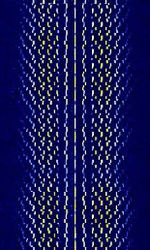 |
|
| Vaisala RS92-SGP Weather Balloon (Radiosonde) | Weather balloon (radiosonde) telemetry data. | 400.15 MHzMegaHertz (MHz) 10^6 Hz — 405.99 MHzMegaHertz (MHz) 10^6 Hz | NFMNarrowband Frequency Modulation | GFSKGaussian Frequency-Shift Keying | 10 kHzKiloHertz (kHz) 10^3 Hz | Worldwide |  |
|
| Vehicle Counting System | Data transmitted from a vehicle counting system installed in car parks. The data is frequency hopping over 10 MHzMegaHertz (MHz) 10^6 Hz. | 915 MHzMegaHertz (MHz) 10^6 Hz — 925 MHzMegaHertz (MHz) 10^6 Hz | RAW | FSKFrequency-Shift Keying | 10 MHzMegaHertz (MHz) 10^6 Hz | Australia | — |  |
| Visonic MCT-201 | MCT-201 is a Miniature Pendant PowerCode Wireless Transmitter by Visonic. It is designed for emergency and control applications in wireless security systems, and home automation and remote control systems. | 315 MHzMegaHertz (MHz) 10^6 Hz — 868 MHzMegaHertz (MHz) 10^6 Hz | USBUpper Side Band Modulation (Radio, referring to reception and modulation mode)Universal Serial Bus (Computer, referring to USB Ports and cables) | PWMPulse Width Modulation | 5 kHzKiloHertz (kHz) 10^3 Hz | Worldwide |  |
|
| Voice Inversion Scrambling | Analog Voice Inversion Scrambling divides the spectra into multiple bands and swaps them. | 150 MHzMegaHertz (MHz) 10^6 Hz — 450 MHzMegaHertz (MHz) 10^6 Hz | NFMNarrowband Frequency Modulation | FMFrequency Modulation | 25 kHzKiloHertz (kHz) 10^3 Hz | Worldwide |  |
|
| WSPR | Weak Signal Propagation Reporter. | 136 kHzKiloHertz (kHz) 10^3 Hz — 1,296.5 MHzMegaHertz (MHz) 10^6 Hz | USBUpper Side Band Modulation (Radio, referring to reception and modulation mode)Universal Serial Bus (Computer, referring to USB Ports and cables) | MFSKMultiple Frequency Shift-Keying | 6 HzHertz (Hz), unit of frequency, defined as one cycle per second (1 Hz). | Worldwide |  |
|
| WiMAX | WiMAX is a family of of wireless broadband communication standards based on the IEEE 802.16 set of standards, which provide physical layer (PHY) and media access control (MAC) options. | OFDMOrthogonal Frequency-Division Multiplexing, OFDMA | 1.25 MHzMegaHertz (MHz) 10^6 Hz — 20 MHzMegaHertz (MHz) 10^6 Hz | Worldwide |  |
|||
| Wireless Temperature Sensor | The freezer temperature is requested by a master at regular intervals, and the slave attached to a freezer responds. The communication format appears to be a variant of chirp spread spectrum, (although the spectrum it consumes is quite narrow at ~150 kHzKiloHertz (kHz) 10^3 Hz). | 434 MHzMegaHertz (MHz) 10^6 Hz | FMFrequency Modulation | CSS | 150 kHzKiloHertz (kHz) 10^3 Hz | Australia |  |
|
| Yaesu System Fusion | System Fusion is Yaesu's digital voice/data protocol for amateur radio, using the AMBE+2 vocoder on a C4FMContinuous 4-Level Frequency Modulation signal. | 144 MHzMegaHertz (MHz) 10^6 Hz — 450 MHzMegaHertz (MHz) 10^6 Hz | FMFrequency Modulation | C4FMContinuous 4-Level Frequency Modulation | 12.5 kHzKiloHertz (kHz) 10^3 Hz | Worldwide |  |
|
| ZVEI Selcall | ZVEI is a family of selcall modes defined by the Zentralverband der Electrotechnischen Industrie in Germany. Selcall modes include ZVEI-1, ZVEI-2, ZVEI-3, PZVEI, DZVEI, PDZVEI and ZVEI-VDEW. | 30 MHzMegaHertz (MHz) 10^6 Hz — 800 MHzMegaHertz (MHz) 10^6 Hz | NFMNarrowband Frequency Modulation | MFSKMultiple Frequency Shift-Keying | 5 kHzKiloHertz (kHz) 10^3 Hz | Worldwide |  |
|
| Zigbee | Zigbee is a low-power, low-data-rate, low-latency mesh network, based on the IEEE 802.15.4 LR-WPAN standard. It is commonly used for automation and IoTInternet of Things devices, including sensors, light switches/bulbs, and other wireless-controlled devices. | 2,400 MHzMegaHertz (MHz) 10^6 Hz — 2,480 MHzMegaHertz (MHz) 10^6 Hz | AMAmplitude Modulation | QQPSK, DSSS | 2 MHzMegaHertz (MHz) 10^6 Hz | Worldwide |  |
Pages in category "UHF"
The following 200 pages are in this category, out of 226 total.
(previous 200) (next 200)(previous 200) (next 200)
